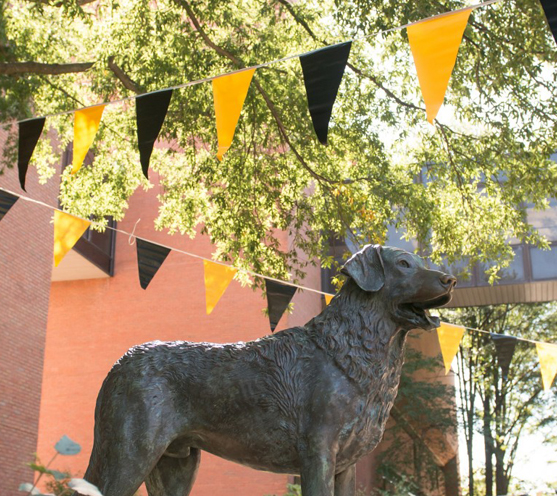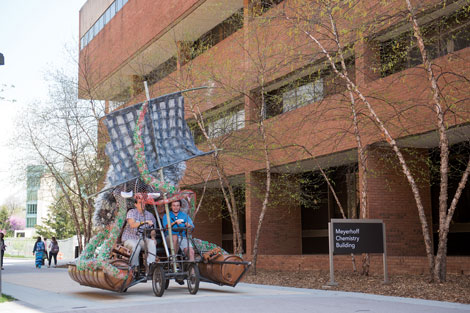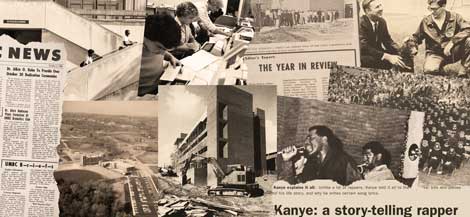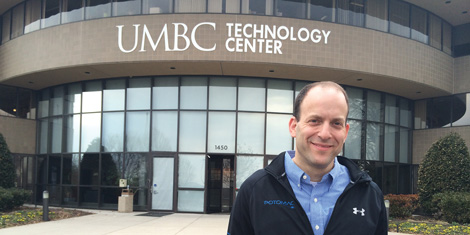 Even though UMBC isn’t quite 50 years old, our university has already developed intriguing rumors and legends. One of the most persistent of these legends – submitted by Tal Levitas ’08, political science – is whether UMBC was designed to control student unrest.
Even though UMBC isn’t quite 50 years old, our university has already developed intriguing rumors and legends. One of the most persistent of these legends – submitted by Tal Levitas ’08, political science – is whether UMBC was designed to control student unrest.
This notion was part of campus folklore when I arrived at UMBC as an undergraduate in 1984.
The short and boring answer is “no.” When you plot the history of UMBC’s initial design and construction (1963-1966) against the trajectory of campus unrest that peaked after the killings at Kent State University in 1970, the timelines don’t match up.
UMBC’s original master plan focused on creating a walkable campus. UMBC was also designed to be modern. An antithesis, if you like, to the classical architectural designs usually favored by American universities. And by the time widespread student protest truly arrived at UMBC in 1970, the template for the campus and its physical design had been set.
So why has this notion persisted?
The newness of UMBC’s architectural design and the steady stream of construction occurring as student protests spread at UMBC are both undoubtedly factors. The mysterious campus tunnels may also have made an impression. (See page 20.)
The sudden intensity of the unrest at UMBC was also a factor. Particularly in the spring semester of 1970, clashes between students and administrators became more vitriolic. Students sat in at the Hillcrest administration building. Classes were disrupted. The largest campus protest on faculty hiring, firing, and tenure practices actually swamped UMBC’s celebration of the inaugural Earth Day.
Reading through the papers of UMBC’s founding Chancellor Albin O. Kuhn, I got a keen sense of how under siege administrators of that period felt. There are disciplinary committees, advisories on withdrawal of student loan eligibility for campus misconduct, and barbed correspondence.
It was a time that shaped the campus mood – and its effects lingered long after the first graduating class left. Yet there are some open questions. Little documentation exists on campus planning between 1969 and 1975. And speculation remains about the height of the Administration Building – which at its completion in 1973 literally towered over the UMBC campus.
Yet the vision of UMBC’s master plan remained largely unchanged through the 1980s with no radical shift or change in direction.
I hope you enjoy this special issue of UMBC Magazine. It has been a delight to answer questions from alumni about UMBC and its history. We also hope it stirs some wonderful memories of our campus as UMBC prepares to celebrate its 50th anniversary a year from now.
— Richard Byrne ’86
Tags: Fall 2015




